Cashmere was the essential hot commodity in early to mid-nineteenth century France. In fact, an 1854 volume titled Paris chez soi, says,
“In 1798 and 1799, the Egyptian campaign lent frightful importance to the fashion for shawls. Some generals in the expeditionary army, taking advantage of the proximity of India, sent home shawls of Cashmere to their wives and lady friend. From then on, the disease called Cashmere fever took on significant proportions. It began to spread during the Consulate, grew greater under the Empire. It became gigantic during the Restoration, reached colossal size during the July monarchy and has finally assumed Sphinx-like dimensions since the February Revolution of 1848.”
The Cashmere shawl, unlike most other fashion items, possesses an appeal like no other. This imperial, hand-woven textile came to France from the East through Napoleon. During his time, it became a cultural fetish and conjured up images of exotic delicacy and fine luxury.
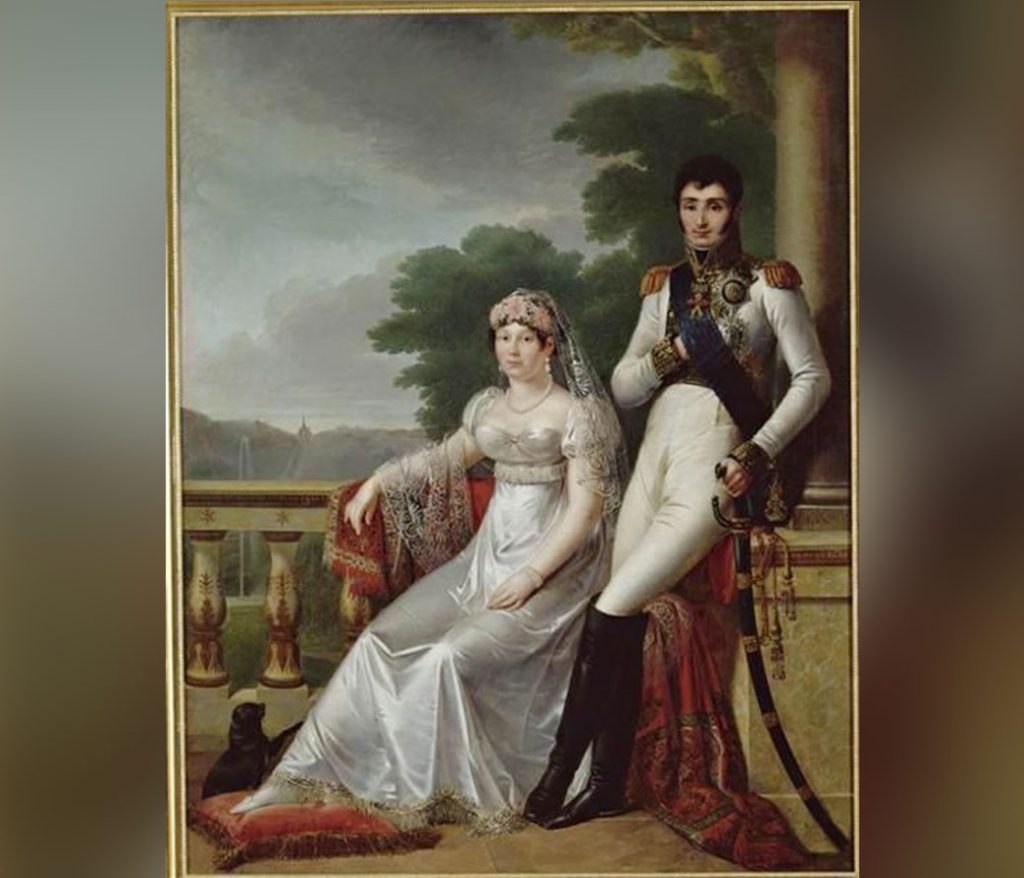
French and the Cashmere Shawl
Frank Ames, in his history of the Kashmir shawl, describes the first point of contact between fashion and empire.
“When Napoleon returned from Egypt, the generals and officers who had served under him brought back mementos of the Orient. Among these were Kashmir shawls, which they wore around their waists as belts.”
From being a war souvenir, it soon became a fashion necessity, not just for its beauty but also its functionality and provided warm coverage. In fact, it might seem ironical, but Cashmere shawls permitted ladies to dress scantily in public and still remain decorously covered. Cashmere, which was once an integral part of the military indicating conquest & strength, now became feminine. It subsequently moved into the domestic sphere of fashion. It became a status symbol in the mid-19th century and became a trendsetter after Empress Josephine adorned it. Following her, every fashionable lady required a Cashmere shawl to complete her wardrobe and stand among the social elite.
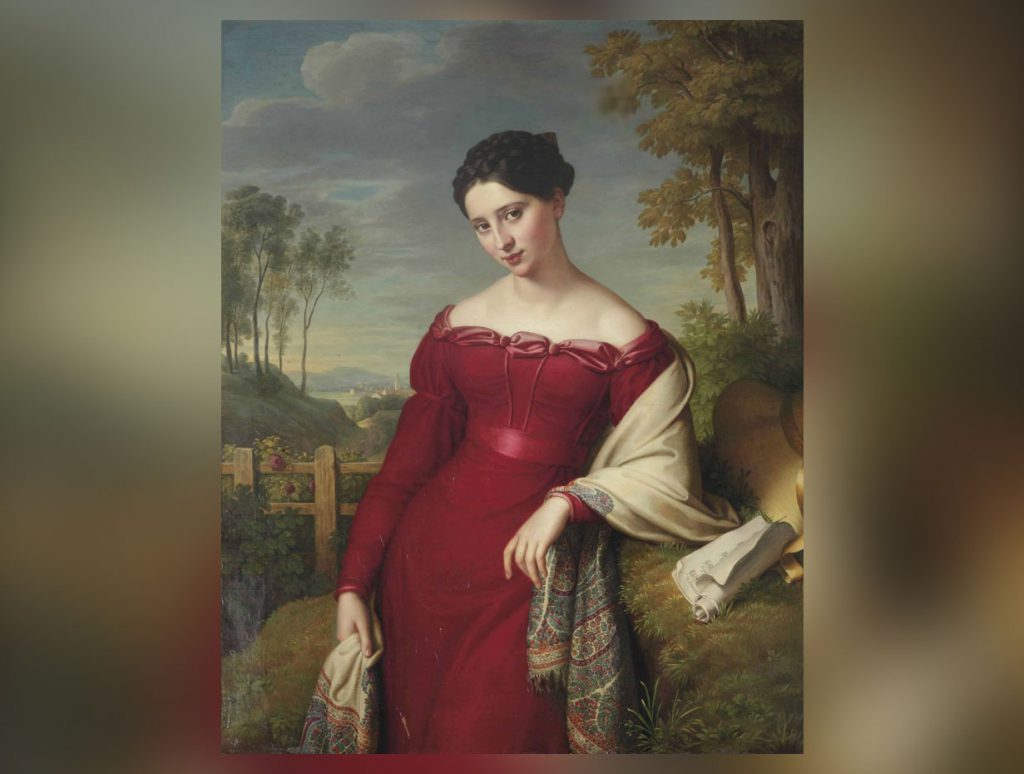
And there's more…
Cashmere was an indicator of economic status. Although people believe that Josephine owned several shawls, it was the Cashmere that held the highest value. Apart from looking at it from a social and economic standpoint, it also signified feminine virtue. People considered it an heirloom. A mother gifted it to her daughter or women purchased it before their wedding. Journals reiterate that cashmere was an accessory ideal for married or marriageable women. Sociologist Pierre Bourdieu calls it “distinctive”, that quality of uniqueness that the dominant social group cultivates in order to maintain its place in the hierarchy. Basically, everyone coveted it, but not everyone could have it.
Also read: Kashmiri Shawls During the Dogra Period
A leaf in French literature
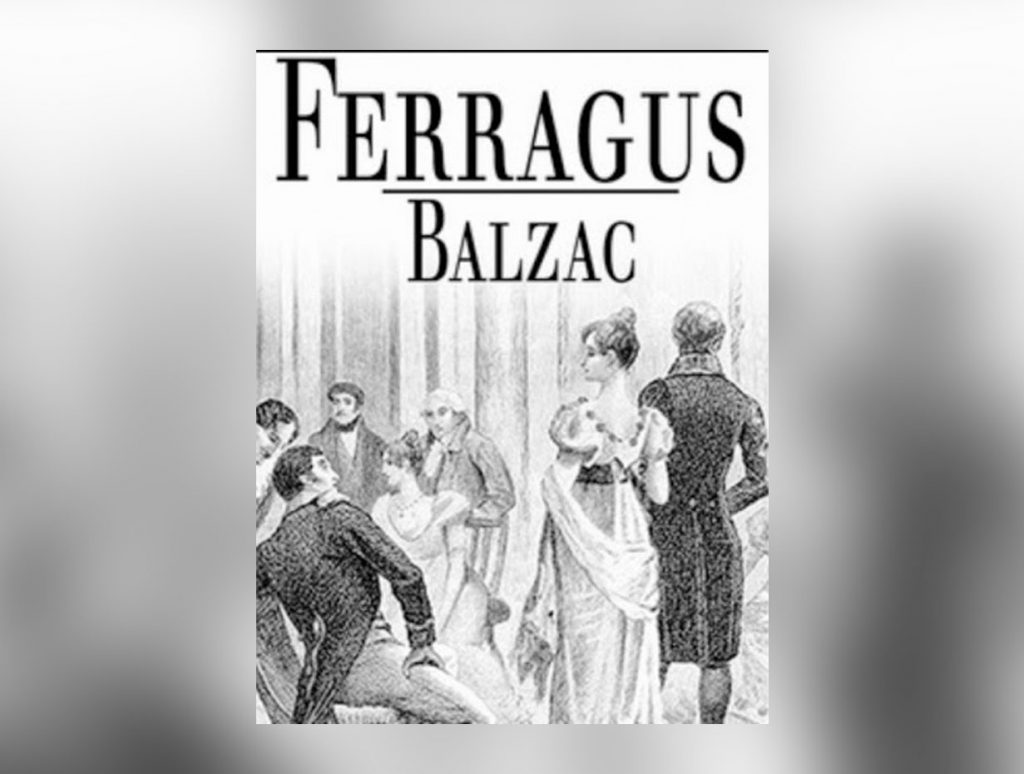
Honore de Balzac, definition of “distinction” is similar to Bourdieu’s. It provides the structure for the analyses of a few texts in French literature that establish a link between the fashion trend and broader social commentary. In one of his stories on Parisian life, Balzac makes a clear distinction between the two kinds of Parisian women. One can imitate the proper lady and the other can’t.
Cashmere in French Novels
According to Bourdieu, taste is a social construction. It's not just a barometer of social standing but also social meaning. A clear illustration of this is mentioned in Balzac’s novel Ferragus, written in 1833. Here, the female protagonist, Madame Jules, is seen through the eyes of her jealous admirer, Auguste de Maulincourt. It is when she delicately steps off a carriage and enters into a stately apartment. While he follows her, she steps out again and enters a flower shop to buy a hair ornament for the evening soiree. When she arrives at the ball in the evening, she is the cynosure of all eyes due to the simplicity of her dress, which is equated with nobility. The colour of her outfit is white, which reinforces her virtuous nature. There is a phrase that is most used for her, ‘less is more.'
Jules’s apparent foil arrives a little later and accuses her husband of having a clandestine affair. She is the exact opposite of Jules, because of her inappropriate attire, which in turn reflects her low social standing. Jules wears a pure white Cashmere shawl that makes her stand out, while Balzac describes,
"Ida’s shawl is doubly inappropriate. First, she wears it like an open curtain at a bedroom window. Gaping and trailing on the floor, it leaves little to imagination"
Cashmere in more Books
Another of his novels, La Cousine Bette, also takes up the analysis of society through the prism of a single family. The family has complex relations with elements from all social levels. A peasant, Bette came to Paris to stay with her beautiful cousin, Adeline. Adeline was the wife of a wealthy soldier, part of Napoleon’s army. Bette is envious of Adeline’s yellow Cashmere shawl and is supposedly the reason for her “poor relations” at material and emotional levels.
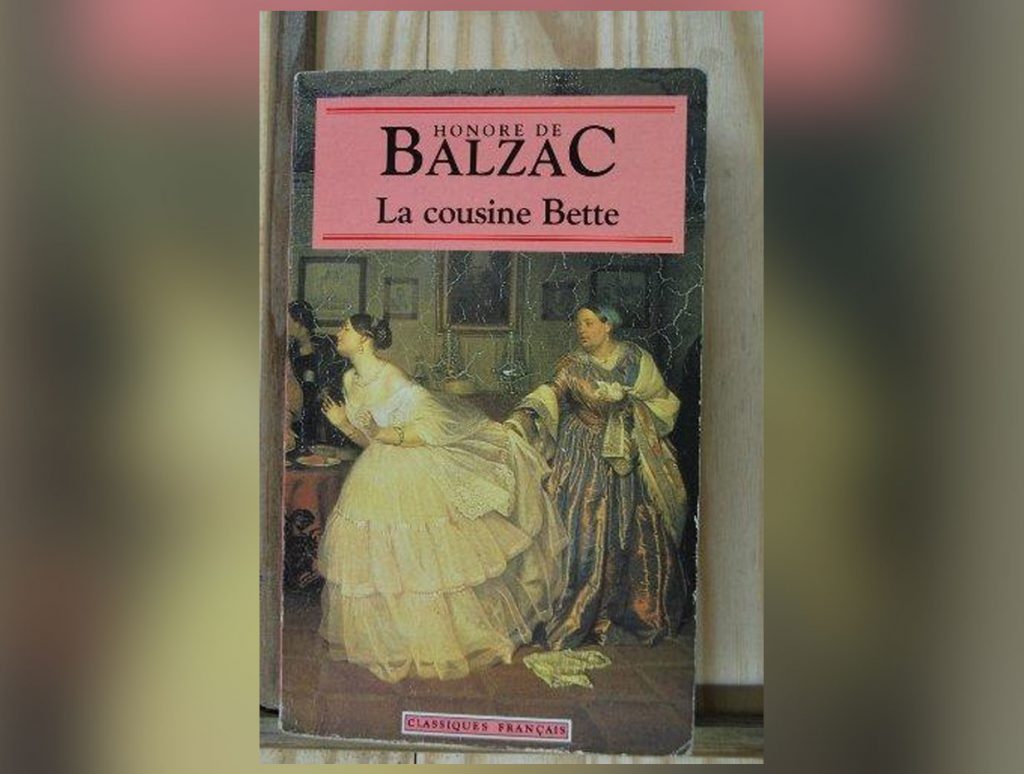
Bette’s fascination for the shawl reflects her craze for Cashmere, but also her yearning for power and prestige. Adeline’s yellow shawl signifies imperial luxury and a cultural sign as well. The shawl is linked to Bette’s “imperialist” fantasy of both wealth and honor. The novel, also represents marital bliss, since Adeline received it as a gift from her husband. Finally, even though it is old, Bette wants to pursue it because it is chic and timeless and an avenue to enter the fashionable circle.
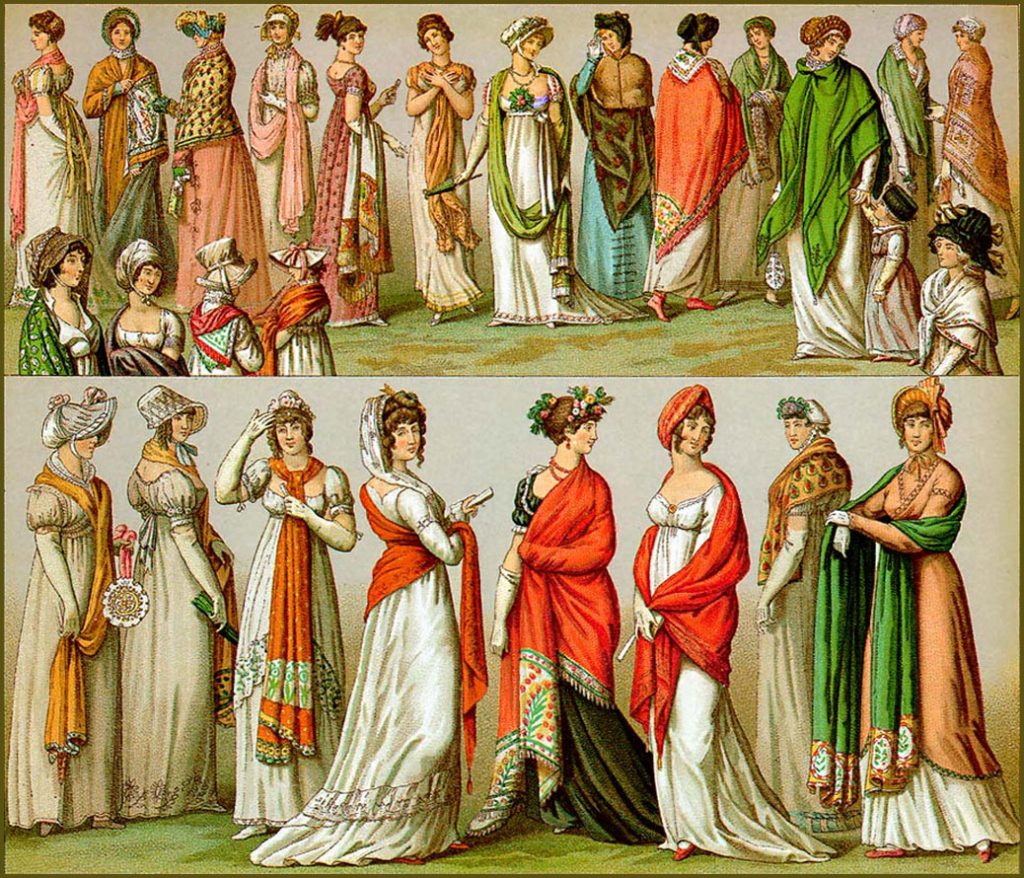
Cashmere was a fetish for French women and remained so for a long, long time. Today, it is still an “object de desire” and many consider it the most stunning and elegant of all shawls. Unfortunately, the market is full of imitation shawls that nullify the painstaking craftsmanship that goes into making this ‘art of the royals’.
Also read: 500 Years of Timeless Fashion - Pure Pashmina
Origins of a Cashmere shawl
The origin of a Cashmere shawl is unbelievably modest. The raw wool comes from the high altitudes of the Himalayas, where the goat inhabits. The goat is strong and sturdy and looks absolutely ethereal from near and far. It is this goat that grows a super fine and soft hair type on the most sensitive parts of its body. This includes the underbelly, neck, and more. The wool grows on its body in the peak winter season so as to protect it from cold. If one travels to Ladakh (India) in winters, one gets to see large flocks of these goats, full of fine Cashmere, roaming around to look for grazing areas in these harsh conditions.
Winters in the Himalayas
Winters are really harsh in the Himalayan region. The temperatures go down to -40 degrees C. Snow covers everything and the area cuts off from the entire world. Even in these conditions, the Cashmere goats surprisingly survive, and that too in the best of conditions. It gets difficult for their herders to find grazing areas for them. There is a shortage of water and food for the goats as well as for their herders. Surviving is a challenge in these winter days, yet the herders as well as their goats manage to get through.
The world’s purest shawls and scarves come from Kashmir, North India. Ladakh is the region in Himalayas, where pure Cashmere grows. It is the Changthangi goats of Ladakh, which survive brutal temperature changes the region experiences to grow it. Ladakh is famous for the way it fully cuts out from the rest of the world, in the winter season. The roads are totally cut, and air transport is seldom available. In these conditions it is barely possible for the herders to move out or anyone else to move in, at least in the mountainous regions. Hence, it is the strength and valour of the Cashmere goat herders to survive and rear their goats properly and carefully.
Processing of a Cashmere shawl
As stated earlier, a Cashmere shawl has a modest beginning. Wool grows on the body of the Cashmere goat in winter, hence protecting them from the immense harshness of the cold. Winter lasts for around 5 months, and March is the Springtime. It is the Spring season when the goat feels discomfort in its body due to warmth and starts rubbing itself around coarse surfaces. Hence, its hair is present on stones, walls, floors, and bushes. This makes its herders alert and they professionally comb off the hair left on the body of the goat. They use large combs and other smaller tools to gently comb out the hairs from the goat’s body. The goat is now free to roam, while herders have the precious hair, packed in small bags.
Artisans process this hair later, in a number of steps, to produce Cashmere scarves, shawls, or apparel.
What makes Cashmere special
There are a number of reasons why Cashmere has always been special. Its craze in Europe, especially in France, has several reasons. To start with, the processing of Cashmere is immensely intricate and praiseworthy. It is perhaps the patience and passion-filled craftsmen of wool who make it what it is.
Processing of Cashmere - A Magical Journey
Processing of Cashmere takes place in steps. The first step is cleaning. Cleaning of Cashmere wool when herders acquire it from the Cashmere goat is the first thing that craftsmen do. Lumps of wool contain a large amount of contamination. Vegetable wastes, dirt, dust, and other impurities are profusely present in it. Hence cleaning is an essential part.
Workers thoroughly clean Cashmere. Then they handpick lumps of Cashmere wool in small quantities, and seperate every type of pollutant from them. Clean wool is dipped in pounded rice mixed with water. This gives strength to these fibres. The mixture is later easily removed by soaking in water, and the resultant fibre is stronger, softer and shinier.
Clean threads are handed over to spinners of the fibre. These artisans (who are mostly women) transform lumps of fibre to long and fine threads which are just 12 to 18 microns in diameter. Fine thread production is a challenging task because of the finesse and gentle nature these threads have. But thanks to the exceptional skill and decades old experience of the women artisans, who make it look effortless and leisurely.
The next step is weaving. Fine fibre is handwoven, as machines strain it too much. Threads are mounted onto the traditional handlooms, and that is when one or two men sit across. The weavers weave until threads are transformed to fabric. This is how a Cashmere shawl, Scarf or apparel comes into existence. It is graceful, beautiful, intricate, lightweight and extraordinarily warm.
More Demand, Less Supply - the coveted Cashmere shawl
The demand for a Cashmere shawl has always been more than the supply. The Supply of Cashmere has always had limits. The season for less supply is the limited growth on the body of Cashmere-producing goats. Even the healthiest goats produce a maximum of 150 grams, which isn't enough even for one Cashmere shawl. Yet the demand, especially from Europe, is never decreasing, and it never was. Since the 18th century, especially when Empress Josephine wore a Cashmere shawl, these luxury accessories were in high demand, and every woman wanted at least one in her lifetime. But the limited supply would be the main hindrance, as well as the reason for its exclusivity. Cashmere shawls are coveted, and one of the reasons is the limited supply, which makes them one of the most sought-after accessories in the world.
Features of a Cashmere shawl - luxury personified.
A Cashmere shawl is nothing less than luxury itself. Coming from an animal, no one could ever have believed that this shawl would be as soft as a feather. Cashmere shawls are one of the softest wraps in the world. Apart from being super soft, these shawls are exceptionally fine and lightweight. These properties make a Cashmere shawl the purest form of luxury. Lightweightedness makes it easy to carry and its finesse makes it ideal for those with a classy taste for accessorising
It is worthwhile mentioning that the weight of a large shawl is under 500 grams, which makes it ideal for winter days when one is already loaded with layers. When shawls are prepared on looms, their threads have a diameter of just 12 to 16 microns. This immense fineness of the thread makes a Cashmere shawl super delicate as well as lightweight. But even after being such a fine accessory, a Cashmere shawl never compromises on comfort. Cashmere shawls are the most warm wraps, ideal for colder days and nights. It is this Cashmere wool that keeps the Cashmere producing goat warm even in -40 degrees C - one of the harshest temperatures. And shawls made from the same bestow an extraordinary comfort to its wearer.
Patterns, Patterns, and Patterns
Cashmere shawls were an age-old accessory, which might have been discontinued by the modern fashion trends. But because these accessories included all the patterns that were ever introduced, they managed to remain timeless. Cashmere shawls started as plain and embroidered. But gradually, their makers realized that not all will love to wear embroidery and plains all the time. With time, Cashmere shawls were printed and patterned for regular use. And then came ombre-dyed, abstract-painted, laced, and reversible Cashmere shawls. When this art form incorporated all patterns that ever existed, buyers always preferred Cashmere over other fabrics. Hence Cashmere shawls took the limelight away from every new fashion trend and kept takers attached to itself for centuries.
Some of the most prominent patterns when it comes to Cashmere shawls are:
- Solids: Plain Cashmere shawls are prepared without any embroidery or patterning. These no- embellishment shawls have a grace of their own. These are ideal for everyday use.
- Prints, Patterns and Ombre: Printed, patterned and Ombre dyed Cashmere shawls are relatively a modern design. Animal prints, floral prints, chequered patterns, striped patterns, contemporary colour combinations and more - all modern trends got incorporated into Cashmere and women were charmed, owning at least one.
- Kani Shawls, Embroidered Cashmere: Kani shawls and hand embroidered Cashmere shawls were more traditional. These were the first ones to be embellished like that. Kani shawls and jamawar embroidered shawls took 4 to 5 years to complete and were the highest priced shawls, and this has been so even now.
- Swarovski embellished and reversible Cashmere shawls: These two categories are pretty unique and exclusive. While reversible shawls are two faced shawls which can be worn from either side, swarovski embellished shawls have swarovski crystals over the base, making both of these designs alluring and elegant.
Because there are so many patterns to choose from, one can wear Cashmere shawls to all occasions. While there are solids and prints for everyday use, there are Kani and embroidered shawls for special events and places. Swarovski prints and lightly embroidered shawls can be worn for semi-formal occasions.
The most versatile accessory goes to…
Perhaps Cashmere shawls are the most versatile accessory in the world. With so many patterns to choose from, creative buyers themselves style their shawls in so many graceful ways. While some like to style their fully embroidered Cashmere shawls on their shoulders, others like these to dangle from around their neck. Working women, who love to wear Cashmere shawls to their offices, often tie the shawls in a French knot or loosely wrap it around their neck. Some even wear Cashmere shawls as wraps and capes while others tie it to their handbags for a chic style.
Because there are so many ways to wear Cashmere shawls, these are super versatile, and hence the first choice for a large number of individuals.
Cashmere Shawls stay for a Lifetime
When properly cared about, Cashmere shawls stay for a lifetime! Yes, these luxury accessories can last as long as 30 years if properly cared for. Gentle washing, careful drying and storage makes these shawls even more graceful as opposed to usual wool shawls. Some women have been recorded to own shawls which have belonged to their grandmothers. This property of Cashmere shawls makes them alluring and women often get fascinated by the fact that the shawls will accompany them forever. Hence, these remain close to one’s heart and become the special heirloom gifts for loved ones
Cashmere Shawls are Sustainable, Responsibly Crafted
Even Though it is the prerogative of the makers, Kashmiri Cashmere shawls are sustainably crafted. From its acquisition on Ladakh, its herders always make sure to prevent any kind of animal cruelty. The hair from the body of the goats is removed (gently combed off) in the summer season to prevent their body from the cold. Next, the wool is processed manually, and no use of machinery is done or even required. Zero machine use means zero pollution and this too adds up to Cashmere shawls being sustainable. Hence shopping for a Cashmere shawl can be called responsible shopping
Concluding
As many reasons as can be given, Cashmere has always been the most sought after wrap accessory that Kashmir could give the world as a gift. The shawls, wraps, scarves or blankets, all are immensely elegant as well as comfortable. Be it the 19th century France, or the current times, Cashmere hasn't lost a tad in the admiration that people have for it. Its artisans are still revered for the flawless work they do.
The concept of Sustainability rarely had a mention in the past centuries. But right now, if the product isn't sustainable, customers will be diffident about buying it. This is because of recent concepts like animal cruelty, carbon footprint, caring about the employee benefit or being responsible inhabitants of the earth. Fortunately, Cashmere has passed the test of being a responsible buy. When it comes to Kashmiri handmade Cashmere scarves, there is no animal cruelty and all the processes of preparing a Cashmere shawl are manual. Hence there is no use of machines which simultaneously reduces carbon emissions. Hence when you invest in a pure, high quality Cashmere scarf or shawl, you are being a responsible, conscious buyer. This makes the ever graceful Cashmere a timeless accessory, which has passed the test of time, and been a wonderful companion since times immemorial.